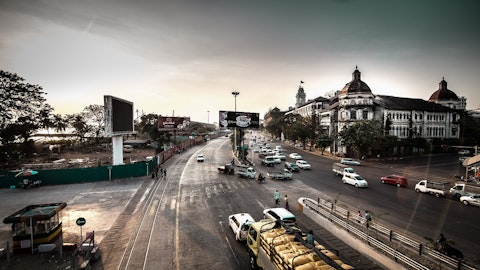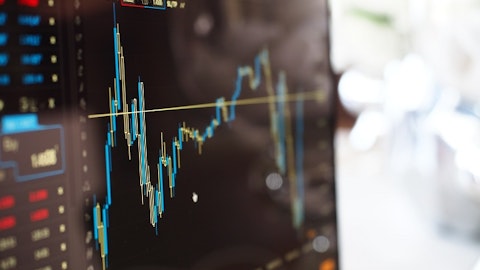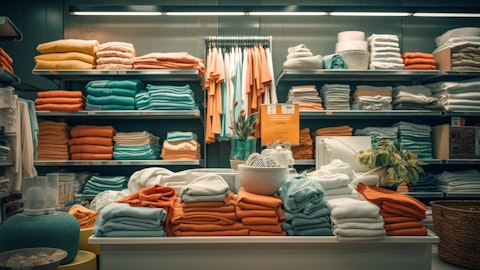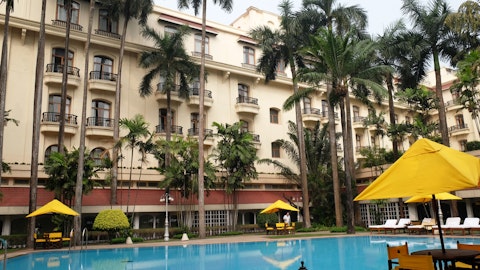In this article, we are going to discuss the 10 best alternatives to Champagne. You can skip our detailed analysis of the global Champagne market, the rising prices of bubbly, the potential of Champagne as an investment asset, and sustainability in the Champagne industry, and go directly to the 5 Best Alternatives to Champagne.
Birthdays, engagements, weddings, and Christmas – Champagne is synonymous with celebrations. But while its Italian cousin Prosecco is the drink of bottomless brunches and English Sparkling Wine is its up-and-coming counterpart, Champagne has long been associated with high society. Over the years, the luxurious bubbly has been a go-to for the affluent and has also inspired many artists, painters, photographers, writers, musicians, and the world of cinema. It is said that even Winston Churchill himself drank two bottles of bubbly every day.
READ ALSO: 15 Most Popular Sparkling Wine Brands in America and 15 Highest Quality Champagne Brands Under $300.
Global Champagne Market:
Widely considered to be the Best Sparkling Wine in the World, Champagne witnessed its shipments dip 8.2% in 2023 to reach 299 million bottles, according to a statement by Comité Champagne, a trade organization for the industry.
Sales in France were down by 8.2% with 127 million bottles, as the domestic market suffered more from inflation compared to export markets, which has weighed on household purchasing power throughout the year. Exports of the beloved bubbly also decreased by 8.2% from 2022, with 172 million bottles, now accounting for more than 57% of overall sales, compared to 45% a decade ago. Some of the major reasons for this decline include inflation, unfavorable geopolitical situations. and the overstocking by distributors for fear of shortages in 2022. However, despite a lackluster year in terms of volume, the global market for Champagne remained close to its peak point in terms of revenue. The famous appellation boasted a turnover of around $6.84 billion in 2023, only 1.5% less than the previous year, thanks to the increase in value for cuvées, especially within the export markets.
The Rising Prices of Bubbly:
The price of France’s favorite fizz shot up by around 10-12% in 2023 after an increase of 7% already the previous year, with producers putting the blame on high costs. The grapes to produce the delicious wine account for over half of the overall costs of its production, and with grape prices going up by 10% in 2022, Champagne houses felt the need to also increase prices accordingly. The increasing costs of labor, energy, and packaging materials also put great pressure on prices, with the uptick in the cost of glass being especially taxing at 40%. Moreover, a great many producers finance their stocks of bubbly, so the rise in interest rates from 0.7% in 2022 to 3.5-4% in 2023 didn’t exactly help either.
Champagne as an Investment Asset:
Rare wines are incredible investment vehicles, and Champagne is no exception. The beloved tipple can preserve and even increase in value during economic instabilities, inflationary periods, and recessions. Also, if stored properly, Champagne gains wonderful secondary aromas and flavors with age, which is also reflected in its prices.
The Liv-ex Champagne 50 index tracks the price performance of the most recent physical vintages of the 13 most actively traded Champagnes, and although the index has fallen by 6.2% since the beginning of 2024, it has witnessed a significant increase of 40.2% in the last five years, demonstrating the popular sparkling wine’s long-term investment potential.
Sustainability in the Champagne Industry:
The consequences of climate change are already being felt in Champagne. Between 1961 and 2020, the average temperature of the region has increased by 1.8°C, causing a plethora of problems for its wine-making industry.
As a response, in 2003, Champagne conducted an environmental audit of all its processes. It was the first wine-growing region in the world to assess its carbon footprint at the time. Since then, this has been updated every 5 years, in its entirety, to regularly monitor the pace of emission reductions.
The findings prompted the famous region to adopt an ambitious carbon plan as early as 2005. In 2015, the second Champagne Carbon Plan took over with the objective of reducing the Champagne region’s overall emissions by 25% by 2025. Between 2003 and 2018, bubbly’s carbon footprint had already decreased by 15%, and the use of phytosanitary products and nitrogen fertilizers had also been halved. Today 63% of the vineyards are under environmental certification, and 90% of industrial waste is treated and recycled.
Founded in 1729, Ruinart is widely known as the first Champagne house in the world. It currently remains part of the Moët Hennessy Louis Vuitton SE (OTC:LVMUY) family of brands after it was sold to Moët & Chandon in 1963. Thanks to the financial backing of a luxury powerhouse such as LVMH, Ruinart has been able to transform its vineyards with climate change in mind. Currently, the house sources 25% of its grapes from estate vineyards and the rest from growers. According to Frederic Dufour, Ruinart’s president and CEO:
“We are committed to promoting sustainable viticulture and favor alternative techniques in estate and grower vineyards. We are herbicide-free and we have reduced our use of chemicals and fungicides by 50% in 15 years. We are especially proud of a 40-hectare plot in Taissy, one of our historic vineyard on the Montagne de Reims, where we have been able to practice experimental vitiforestry, trying new methods of cultivation with the aim of limiting the impact of global warming of the vines while promoting soil health and biodiversity.”
With an annual production volume of 2.5 million bottles, Ruinart is also one of the Best-Selling Champagne Brands in the World.
Commonly referred to as LVMH or Louis Vuitton, Moët Hennessy Louis Vuitton SE (OTC:LVMUY) is a French luxury conglomerate formed after the $4 billion merger of the renowned fashion house Louis Vuitton and wines and spirits company Moët Hennessy in 1987.
The Paris-based industry giant is included among the Most Valuable Alcohol Companies in the World, boasting a revenue of approximately $93.7 billion in 2023 with a net profit of more than $16.7 billion. LVMH became the first European company to surpass $500 billion in market value in April 2023, but the stock price of the multinational luxury conglomerate has since plummeted by around 14.3% over the last year.
Revenue of the Biggest Luxury Company in the World grew 1% on an organic basis to around $22.2 billion in the second quarter of 2024, falling below the market expectations of 3%. Sales in Asia (dominated by China) were hit particularly hard, decreasing by 14% and exacerbating concerns about luxury demand in the world’s second-largest economy. Viewed as a bellwether for the global luxury industry, the group has recently suffered as inflation-hit shoppers hold off from splashing out on designer fashion, combined with a decrease in the sales of Champagne. However, the selective retailing segment, which includes Moët Hennessy Louis Vuitton SE (OTC:LVMUY)’s travel retail business as well as the beauty chain Sephora, grew 5% in the second quarter though still falling short of analysts’ expectations.
Artisan Partners, an investment management company, stated the following about LVMH in its Q2 investment letter:
“Bottom contributors to performance for the quarter included French luxury goods group LVMH Moët Hennessy – Louis Vuitton, Société Européenne. LVMH declined due to the tough macro backdrop in China, and concerns that inflation will weigh on less affluent cohorts in developed markets.
We may also seek to emphasize supply-constrained businesses such as Kweichow Moutai or Hermes, or well diversified businesses such as LVMH, to further dampen revenue variability. Importantly, correlation stocks can also create significant value over time as they compound, particularly when aided by high incremental margin structures such that profits accrue disproportionately to the bottom line. However, their principal portfolio function is to provide the stability and staying power to pursue businesses with high revenue velocity and high incremental margin structures.”
While we acknowledge the potential of LVMUY as an investment, our conviction lies in the belief that some AI stocks hold greater promise for delivering higher returns, and that too within a shorter time frame. If you are looking for an AI stock that is more promising than LVMUY but that trades at less than 5 times its earnings, check out our report about the cheapest AI stock.
Although it is nearly impossible to match the splendor and delectability of France’s famous bubbly, here are some Great Substitutes for Champagne You Can Try.
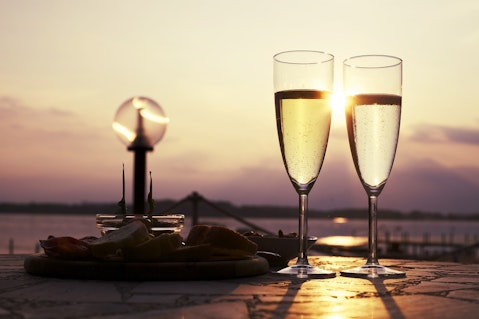
Methodology:
To collect data for this article, we have referred to sources such as Decanter, Luxury Lifestyle Magainze, Reddit, etc. looking for the Top Alternatives to Champagne. To make sure we give you only the best, we picked wines that appeared multiple times in the aforementioned sources, assigned them a score of 1 each time they were recommended on these websites, and then summed up the scores and ranked our list accordingly. When two or more offerings had the same score, we ranked them by the number of upvotes they received on Reddit. For people looking for all the booze but without the buzz, several of the Champagne substitutes mentioned below also come with non-alcoholic options.
At Insider Monkey we are obsessed with the stocks that hedge funds pile into. The reason is simple: our research has shown that we can outperform the market by imitating the top stock picks of the best hedge funds. Our quarterly newsletter’s strategy selects 14 small-cap and large-cap stocks every quarter and has returned 275% since May 2014, beating its benchmark by 150 percentage points (see more details here).
10. Moscato d’Asti
Insider Monkey Score: 2
Hailing from the Piedmont region of Italy – one of the Best Wine Regions in the World – Moscato d’Asti is a sweet, lightly sparkling, low-alcohol wine made from the aromatic Moscato Bianco grapes through partial fermentation. One of the trendiest and fastest-growing wine categories in the world, Moscato d’Asti is typically just 5.5% ABV, making it a great choice for light drinkers.
9. Sparkling Rosé
Insider Monkey Score: 3
Another great wine to serve instead of Champagne, sparkling rosé is ideal for warm weather and sunny days as it perfectly captures the essence of roses, fresh fruits, and citrus. Produced all over the world in a variety of regions and styles, the category of pink bubblies is rapidly gaining popularity among wine lovers and producers alike. Due to the immense diversity of its styles, sparkling rosé can pair well with a variety of foods, as its fruit-forwardness, lack of tannins, and high acidity really help bring out the flavors in your favorite meals.
8. Cap Classique
Insider Monkey Score: 4
Produced using the classic French method of making sparkling wine by creating a second fermentation in the bottle, Cap Classique refers to a range of premium bubblies hailing from the Cape Winelands in South Africa. A perfect wine to enjoy no matter the weather, occasion, or time of day, Cap Classique is best served cold and pairs excellently with smoked and seafood dishes.
7. Lambrusco
Insider Monkey Score: 5
One of the Best Red Wines for Beginners and Casual Drinking, Lambrusco is a wine that effortlessly embodies the spirit of conviviality and refreshment. Driven by its pleasurable appeal, this fresh, low-in-alcohol, fruity bubbly wine has an excellent price-quality ratio, making it one of Italy’s top sellers.
Hailing from the Emilia-Romagna region, Lambrusco is still one of Italy’s most exported wines, not only to traditional markets but also to new ones like the former countries of the Soviet Union – Ukraine, Belarus, Estonia, Latvia, and Kazakhstan.
6. English Sparkling Wine
Insider Monkey Score: 7
Very refined, yet deep and powerful, English sparkling wines are now regularly beating Champagne, Cava, and Prosecco in blind tastings and attracting worldwide attention. As the category continues to boom, several international players like Taittinger, Pommery, and Henkell Freixenet have purchased land in England to help diversify their portfolios and tap into new markets.
5. Prosecco
Insider Monkey Score: 8
One of the world’s most popular and playful sparkling wines, this high-quality Italian alternative to Champagne is a specialty of the country’s northeast, spanning nine provinces of the Veneto and Friuli-Venezia Giulia regions. Prosecco DOC cemented itself as the top Italian wine designation for last year in both volume and value, with production of over 616 million bottles.
Prosecco’s fruitier profile is ideal for those sparkling summer cocktails, making it an excellent Champagne substitute for mimosas.
4. Sekt
Insider Monkey Score: 9
Produced in Germany and Austria, Sekt has been around since the 1920s and has mostly endured a lifetime of mediocrity, until now. Thankfully, the wine has recently undergone a fizz revolution thanks to some governance changes and an increasing number of small estates going to great effort to craft fine Sekt.
3. Franciacorta
Insider Monkey Score: 10
Another Great Sparkling Wine from the Bel Paese, Franciacorta is based on Chardonnay and Pinot Nero and is widely regarded as Italy’s closest rival to Champagne. Franciacorta wines have high acidity and relatively lower alcohol content, ranging from 10-11.5% ABV, and are perfectly paired with any savory appetizers like grilled artichokes, soft rind cheeses, salted almonds, and prosciutto.
2. Crémant
Insider Monkey Score: 15
A delicious and affordable alternative that is like Champagne but not Champagne, Crémant refers to a group of 9 sparkling wines made in France and Luxembourg using the same traditional technique as the luxurious bubbly. The category is produced in several regions and represents a wide variety of grapes, styles, and expressions.
1. Cava
Insider Monkey Score: 18
One of the Best-Value Sparkling Wines in the world, Cava is also produced using the traditional method chiefly in the Penedès region of Catalonia, Spain. Best served chilled, Cava is excellently paired with Spanish favorites like tapas and paella but is also amazing with Mexican food, like fajitas, and even red bean chili. With a total vineyard surface of almost 95,000 acres, around 250 million bottles of Cava are produced every year.
READ NEXT: $30 Trillion Opportunity: 15 Best Humanoid Robot Stocks to Buy According to Morgan Stanley and Jim Cramer Says NVIDIA ‘Has Become A Wasteland’.
Disclosure: None. 10 Best Alternatives to Champagne was originally published at Insider Monkey.
